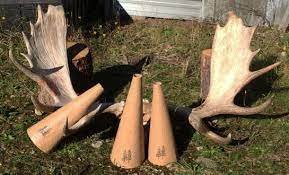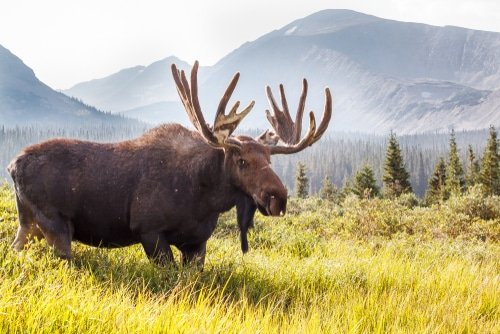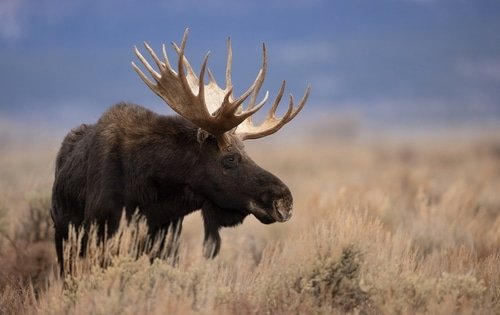Oh, the magnificent moose! These gentle giants of the North have long captured our imaginations with their towering presence and mysterious demeanor. But they’ve also been the topic of many facts and yarns. So sit tight as we embark on an enlightening journey through the tangled undergrowth of Moose Myth vs. Fact.
Moose have woven themselves into our stories and folklore over time but have also become entangled in a web of myths and misconceptions. From their reputation for aggression to their perceived sluggishness, we often believe in these stereotypes without questioning their validity. But fear not!
Throughout this article, we shall embark on a myth-busting expedition, separating fact from fiction regarding these magnificent creatures. We will also uncover some lesser-known truths about moose that will astound you.
So brace yourself for a captivating journey through the wilds of myth and reality as we debunk popular misconceptions about moose and unearth fascinating facts that will forever change how you perceive these enigmatic beings. Get ready to be enlightened and surprised!
Myth 1: Moose are aggressive and prone to attacking
Moose behavior and their preference for avoiding conflicts
When it comes to moose, the popular belief that they are aggressive creatures ready to charge at any human who crosses their path is nothing more than a misconception. Moose are generally peaceful animals with a strong inclination towards avoiding conflicts.
They prefer to do their business undisturbed in the tranquil wilderness they call home. While it’s true that there have been isolated incidents where moose have displayed aggressive behavior towards humans, these occurrences are rare and often provoked by factors such as feeling threatened or defending their young.
Moose may exhibit defensive behavior if threatened
To further debunk the myth of moose being inherently aggressive animals, it is crucial to understand the instances when they might display defensive behavior. Like any creature in nature, moose prioritize self-preservation when faced with danger or feeling cornered.
Suppose a human unknowingly approaches a moose too closely or threatens its personal space. In that case, the animal may react defensively by lowering its head, raising its hackles, or stomping its hooves as warning signs of potential danger. However, even in such situations, most encounters end peacefully once people retreat from the vicinity of these magnificent creatures.
Myth 2: Moose are slow-moving animals
The surprising speed and agility of moose
Contrary to the common assumption that they are lumbering giants incapable of swift movement, moose possess surprising speed and agility when necessary. During mating season (also known as “the rut”), male moose become particularly active and energetic in their pursuit of mates.
They engage in intense battles with other males for dominance, showcasing impressive speed as they charge toward their rivals, antlers clashing with remarkable force. Their powerful leg muscles allow them to move swiftly through dense forests and tricky terrains, making them exceptionally adaptable creatures.
Examples of their ability to outrun humans in certain situations
To truly appreciate the moose’s fleet-footed nature, one only needs to consider some remarkable instances where these majestic animals have easily outpaced human pursuers. In areas where moose are accustomed to human presence, wildlife photographers and researchers have often found themselves surprised by the sheer speed at which a moose can vanish into the wilderness.
Despite their massive size and seemingly slow demeanor, a motivated moose can swiftly gallop up to 35 miles per hour (56 kilometers per hour), much faster than the deer. It is a humbling reminder that underestimating these magnificent creatures would be an error in judgment.
Myth 3: Moose are herbivores with a limited diet
Exploration of the diverse diet of moose
While it is true that moose are primarily herbivores who prefer consuming various vegetation types, their diet is far from limited. These gentle giants are known for their adaptability in finding food sources in different environments.
Besides feasting on tender twigs, leaves, and shrubs found abundantly in their habitats, moose also indulge in aquatic plants such as water lilies and pondweed when they reside close to bodies of water. Furthermore, although it is rare, consumers suggest that some moose may consume fish or rodents under extreme circumstances or nutritional deficiencies.
How their diet varies according to seasonal changes
Like many other wildlife species across the globe, the diet of moose varies with the changing seasons. When vegetation is abundant in spring and summer, moose graze on nutrient-rich grasses and young leafy plants, aiding their growth and providing vital sustenance. As autumn arrives with its vibrant foliage, moose eagerly browse on fallen leaves, twigs, and bark from trees, building up energy reserves for the harsh winter ahead.
During winter, when snow blankets the ground, moose turn to tree bark as a significant food source due to its accessibility compared to buried vegetation. This adaptability highlights the incredible ability of moose to thrive in diverse ecosystems by adjusting their diet according to nature’s cues.
Fascinating Facts about Moose
Fact 1: Moose antlers are the fastest-growing organs in the animal kingdom
When it comes to impressively swift growth, moose antlers take the crown. During the summer months, these majestic creatures experience an astonishing rate of antler growth.
In weeks, moose antlers can grow up to an inch per day! Just imagine magnificent settlers sprouting rapidly, transforming from mere nubs to impressive racks spanning up to six feet.
But as fasShedding growth is, what’s even more intriguing is why these impressive appendages shed annually. Shedding allows moose to regenerate new and improved antlers each year, ensuring they are in top shape for various activities like mating and asserting dominance.
Fact 2: Moose have an exceptional sense of hearing
Behind those big doe-like eyes lies another hidden talent possessed by moose – a remarkable sense of hearing. Their large ears contribute to their acute hearing, vitalizing them to pick up even the faintest sounds in their ears.
This height sense is vital in helping them detect potential predators or locate mates during the breeding season. Whether it’s the snap of twigs or the rustle of leaves, moose possess finely tuned auditory senses that keep them alert and aware of their surroundings.
Fact 3: Moose can swim long distances effortlessly
We may picture moose as forest dwellers who prefer walking, but they are surprisingly adept swimmers, too! Equipped with unique adaptations for swimming, these gentle giants can traverse water bodies with ease and grace. Their long legs act as natural propellers while navigating through lakes or rivers.
Additionally, their hollow hair provides buoyancy, aiding in staying afloat effortlessly. Moose can swim for several miles without breaking a sweat, gracefully propelling themselves through the water like aquatic ballet dancers.

Conclusion
After diving into the lesser-known aspects of moose, we discover that these creatures are truly remarkable. From their rapid antler growth to their exceptional hearing and effortless swimming abilities, moose continue to captivate us with their incredible adaptations. These fascinating facts remind us of nature’s boundless ingenuity and the wondrous diversity of life on our planet.
So next time you spot a moose in the wild or even on a screen, take a moment to appreciate the intricate details and delightful surprises that make them such extraordinary creatures. Let their majestic presence fill you with awe and inspire you to explore more about this magnificent species sharing our world.




